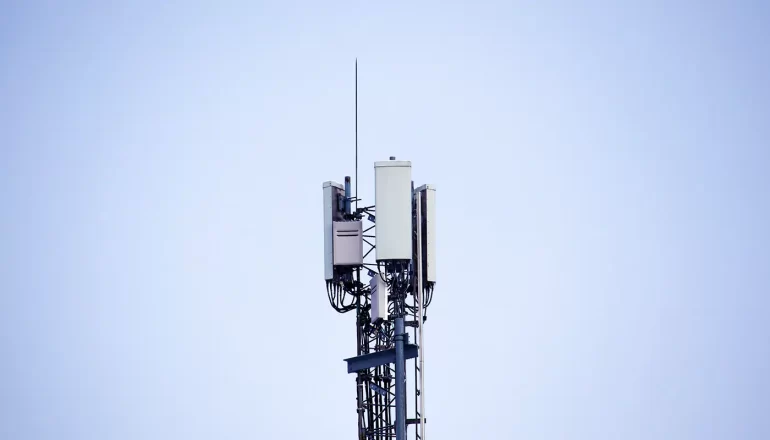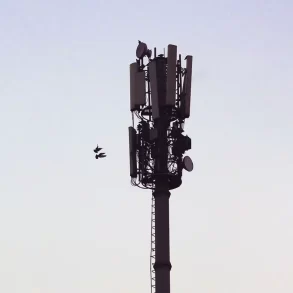The Master Information Block (MIB) is a critical signal in 4G/LTE networks that carries system information essential for user devices to initially connect to the network. By understanding what the MIB is and does, we gain insight into the clever design details that make seamless mobility possible in LTE.
This blog post will provide an overview of the MIB, explaining what specific information it contains and why each component is important for facilitating access between user equipment and the LTE network.
We’ll also explore how the MIB relates to and works together with other physical channels and signals to enable efficient device operation. By the end, you’ll appreciate that despite its simple nature, the MIB plays a foundational role in the complex procedures that underpin modern mobile broadband connectivity.
What is the MIB?
The Master Information Block (MIB) is one of the most important signals transmitted in an LTE network. As its name suggests, it contains master or key information that user devices need in order to initially connect to the network.
Specifically, the MIB carries essential system parameters like the Downlink bandwidth, number of antenna ports, and system frame number. It is broadcast on a fixed schedule on the Downlink broadcast channel so that any device trying to access the network can receive it.
General Motors Finance Phone Number: How to Contact GM Financial for your Financing NeedsThe MIB gives user devices just enough information so that they can locate other important signals like the System Information Blocks (SIBs). The SIBs then convey more detailed configurations needed to establish a network connection.
Key Details About the MIB
The Master Information Block (MIB) conveys several key details that are essential for user devices to initially connect to the LTE network.
- The MIB is broadcast on a Downlink channel, allowing it to be received by all devices within a cell. This ensures that critical parameters are available to any device attempting network access.
- It carries essential information like the Downlink system bandwidth and the number of antennas used for transmission at the base station. Knowledge of the bandwidth enables devices to locate other key signals transmitted in the LTE network.
- The parameters in the MIB enable user devices to decode other important signals such as System Information Blocks. System Information Blocks then convey more advanced details needed to communicate with the network.
- To ensure robust delivery of this vital information, the MIB is transmitted repetitively by the base station. Redundant transmission allows devices to reliably acquire the MIB even under challenging radio conditions.
Why the MIB Matters
The MIB is crucial for enabling devices to initially connect to the LTE network. By containing essential parameters like the Downlink bandwidth configuration, the MIB allows user devices to locate other important signals they need to access the network. The bandwidth indication, for example, shows devices where to look for critical signals like synchronization blocks and system information. Without the MIB, devices would be blindly searching for these signals, severely hampering the network access procedure.
What Are the Two Main Objectives Associated with Data Mining?Additionally, the MIB is transmitted repetitively by the base station to improve reliability. This ensures user devices can quickly and consistently locate the MIB to start the network attachment process. Along with other physical channels, the MIB is part of the carefully orchestrated initial access flow in LTE. Only after decoding the MIB can devices proceed to decode subsequent system information and initiate the random access procedure to request network resources.
To read the Traffic Flow Template (TFT) blog post, you can simply click on the Traffic Flow Template (TFT) link provided.
Contents of MIB
The MIB contains several key pieces of information that allow user devices to connect to the LTE network:
Humanity’s Struggle with AI: 10 Must-Read Novels About Artificial Intelligence- Downlink system bandwidth – This specifies the full range of frequencies that are available for Downlink transmissions from the base station to devices. Knowing the bandwidth allows devices to locate other essential signals like synchronization signals and system information blocks.
- Number of transmit antennas for base station – LTE uses multiple antenna transmission techniques like MIMO to increase data speeds. The MIB specifies how many antennas the base station uses to transmit signals.
- System frame number – This 10-bit number identifies each radio frame in the LTE system. It assists with synchronization between the device and base station.
- Physical hybrid ARQ indicator channel present or not – Hybrid ARQ refers to techniques for error correction in uplink transmissions. This flag tells devices if the associated feedback channel is present or not.
The MIB provides just enough information for devices to achieve initial synchronization and access the network. Once connected, devices can then receive additional configuration details from other system information blocks. The concise MIB balances efficient transmission with the parameters needed to bootstrap the attachment process.
Core Parameters
The MIB contains several core parameters that are critical for initial access by the UE. These include:
- Downlink System Bandwidth: This specifies the number of resource blocks that construct the full carrier bandwidth. Knowing the carrier bandwidth is essential for the UE to be able to locate signals from the base station.
- PHICH Configuration: The PHICH (Physical Hybrid ARQ Indicator Channel) conveys acknowledgements for uplink data transfers. Its configuration in the MIB enables uplink communication.
- System Frame Number: A sequence number identifying each radio frame consisting of 10 subframes. This allows the UE to synchronize its frame timing to the current frame transmitted by the base station.
Additional Details
The MIB contains additional parameters beyond the core ones described previously. Specifically, it includes the cell ID and cyclic prefix length used for the cell. The cell ID uniquely identifies the base station transmitting the MIB. Meanwhile, the cyclic prefix length indicates the amount of time added to help prevent inter-symbol interference.
How to Type Square Root on iPhone: A Step-by-Step GuideThe MIB also provides key details on the antenna port configuration used at the base station. This specifies whether transmit diversity, spatial multiplexing, or other MIMO modes are used. Port configuration is vital for the UE to know how to correctly decode signals from the various antenna ports.
Transmitted on Broadcast Channel
The MIB is transmitted on a dedicated LTE broadcast channel known as the Physical Broadcast Channel (PBCH). This allows the MIB to be easily located by user devices. The PBCH uses a predefined schedule for when the MIB data is sent. Transmissions occur repetitively and frequently, every 10ms to be precise. This ensures user devices have ample opportunity to find the MIB in order to kick off the initial cell search process.
The frequent and consistent nature of the MIB signaling provides for robust transmission even in challenging radio conditions. This helps ensure that critical parameters can reach cell edge users and penetrate difficult indoor locations.
Robust Transmission Scheme
The MIB is transmitted using a specially designed robust scheme to ensure reliability. This includes:
- Special coding – The MIB data is channel coded to allow recovery even at very low signal levels, enabling consistent reachability including for cell edge users. This ensures the information can be decoded by all users equipment attempting access.
- Reachability for all UES – Between the robust channel coding and transmission on the dedicated Physical Broadcast Channel, the MIB transmission scheme facilitates reception by users across the entire cell coverage area. This sets up initial access even for devices far from the base station.
By leveraging a reliable broadcast channel and sophisticated coding, the base station conveys the MIB in a highly robust way to facilitate universal synchronization. This paves the way for subsequent access messaging by establishing the initial foundation.
Role of MIB in 4G Access Procedures
Bootstraps Overall Process
- Provides bandwidth/settings for decoding subsequent messages.
- Let’s UE synchronize frame timing.
The MIB contains essential information like the Downlink bandwidth and PHICH configuration that UES need to set up their receivers to decode subsequent signaling messages. By providing these key transmission parameters upfront in a robust broadcast, it bootstraps the overall 4G access process.
In addition, the MIB delivers the system frame number which allows UES to achieve frame timing synchronization with the cell. Achieving this time alignment is crucial so UES can determine where to look for important broadcast system information blocks coming later. Overall, the MIB sets the stage by enabling both frequency and time synchronization prerequisites.
Triggers Further Signaling
- SystemInformationBlockType1 obtained via MIB details.
- Then RRC connection and bearer establishment proceeds.
After decoding the MIB, UES obtains the SystemInformationBlockType1 (SIB1) using the bandwidth/PHICH details. SIB1 contains further information like cell selection parameters and scheduling of other SIBs. This ultimately leads to the RRC connection setup signaling such as RRC request and connection setup messages.
Following that path, the bearer establishment process takes place to set up the data plane connectivity. So the MIB helps trigger a cascade of synchronization, system information acquisition, control plane signaling, and user plane configuration – all critical steps in the 4G attach progression. Its role at the beginning is what kicks off this chain toward access.
Importance of Each Parameter
The MIB contains several key parameters that serve important functions in establishing initial connectivity between user devices and the LTE network.
First, the Downlink system bandwidth indicates where devices can locate other essential signals transmitted by the base station. By providing the transmission bandwidth, the MIB enables devices to search the correct frequency range to find signals like synchronization blocks, reference signals, and system information blocks.
Second, the number of transmit antennas used by the base station provides vital information on how signals are transmitted from the cell tower. Devices leverage transmit antenna data to properly receive and demodulate signals from the base station.
Additionally, the system frame number helps devices synchronize their frame timing to the cell tower for aligned data transmission and reception. Matching frame timing is critical for proper network operation.
Finally, the physical hybrid ARQ indicator channel parameter informs devices if uplink control feedback channels are present. These feedback channels relate to hybrid ARQ processes for error correction.
Connection to Other Physical Channels
The MIB carries the minimum amount of information needed for user devices to initially connect to the LTE network. With the essential parameters provided in the MIB, devices can decode other important signals transmitted in the Downlink by the base station.
In particular, after decoding the MIB, devices leverage the system bandwidth and antenna configuration to locate the synchronization signals and cell-specific reference signals that are scattered across the grid of available subcarriers. Devices use these signals to achieve time and frequency synchronization with the cell.
Furthermore, the MIB enables user devices to decode the System Information Blocks (SIBs) that are transmitted on the Downlink broadcast channel. SIB1 contains additional details about the cell configuration as well as information on how to access the network. Following MIB decoding, obtaining SIB1 is a key next step during the initial access procedure before the random access process can occur.
So while the MIB itself only carries a modest amount of system information, it provides the foundation that allows connected devices to discover the signals and channels that are essential for completing network registration and access. The MIB truly lives up to its name as a Master Information Block in LTE.
Role in Initial Access
The MIB plays a pivotal role in the initial access procedure that allows user devices to connect to the LTE network. It is one of the first signals acquired by devices during cell search, providing fundamental information like Downlink bandwidth and antenna configuration.
With the MIB in hand, devices can then decode other essential system information carried in the System Information Blocks (SIBs). In particular, SIB1 contains details on access barring and random access parameters. After obtaining the SIBs, the device initiates a randomized access procedure by sending a preamble and establishing uplink synchronization.
So while brief, the MIB sparks off an intricate chain of events enabling mobility. It distills just enough key parameters to guide devices to the next stage of system access. Like the first domino, toppling the MIB ultimately leads devices through the gateway into LTE connectivity, content streaming, and beyond.
Conclusion
The MIB is truly the foundation for initial access in LTE. By transmitting essential system parameters like Downlink bandwidth and antenna configuration, it enables user equipment to initially connect to the network. The ingenious design of the MIB facilitates the entire process – its repetitive broadcast allows devices to reliably acquire the information despite not having any prior synchronization.
Understanding the MIB gives insight into the clever intricacies that make the LTE protocol efficient and robust. The way the MIB seamlessly works together with other physical channels and signals during the initial access procedure is a testament to the great forethought in the designers of the standard. With just a minimal set of critical parameters, the MIB sets up devices to decode the rest of the LTE signaling framework, culminating in the establishment of data connections.
The MIB may seem simple, but it carries importance far beyond just the bits of information it bears. It is the very first step in an eloquent symphony of signals that ultimately facilitates ubiquitous connectivity that we rely on everyday. The foundational role of the humble MIB should not be overlooked; it is an integral ingredient in the secret sauce driving our modern mobile networks.
Closing Remarks
The MIB may seem like a simple signal, but don’t underestimate its importance in the complex task of providing seamless mobility! By carrying essential system parameters like Downlink bandwidth, antenna configuration, and the system frame number, the MIB enables user devices to initially connect to the LTE network during the initial access procedure. It provides just enough information for devices to then locate other key signals like the synchronization signals and system information blocks to continue the access process. So while the MIB itself contains only a small amount of key information, it kickstarts an intricate chain of events for establishing robust and efficient mobile broadband connectivity through LTE. I hope this overview gave you an appreciation for how the MIB facilitates the clever design of LTE networks to deliver seamless m







